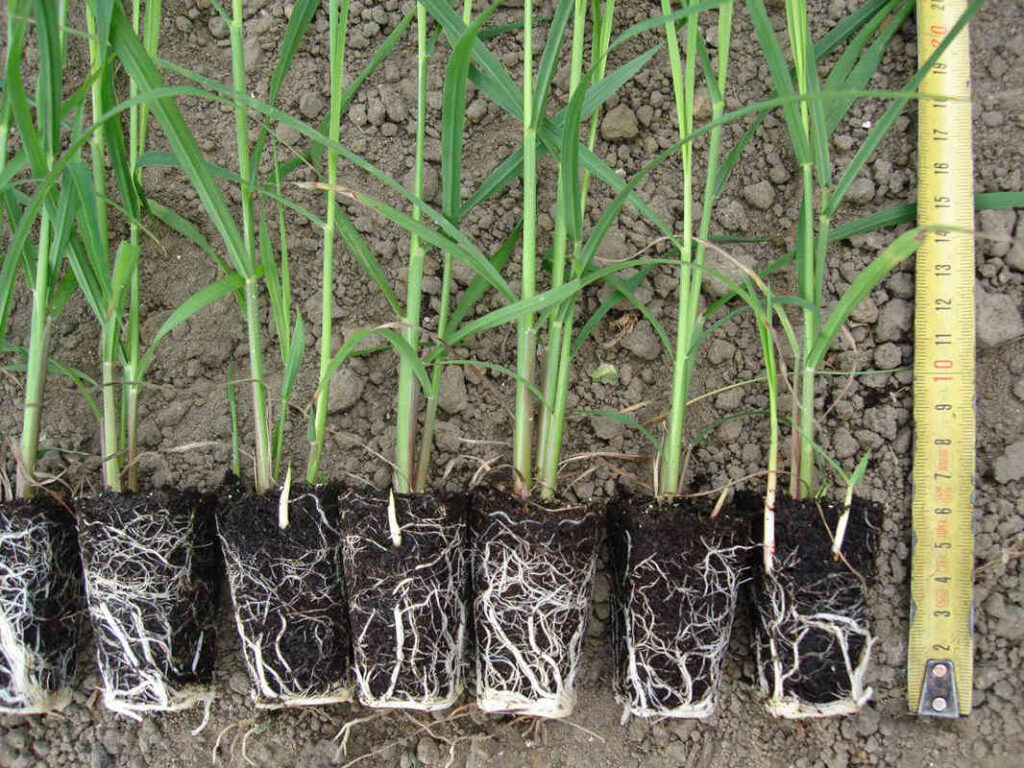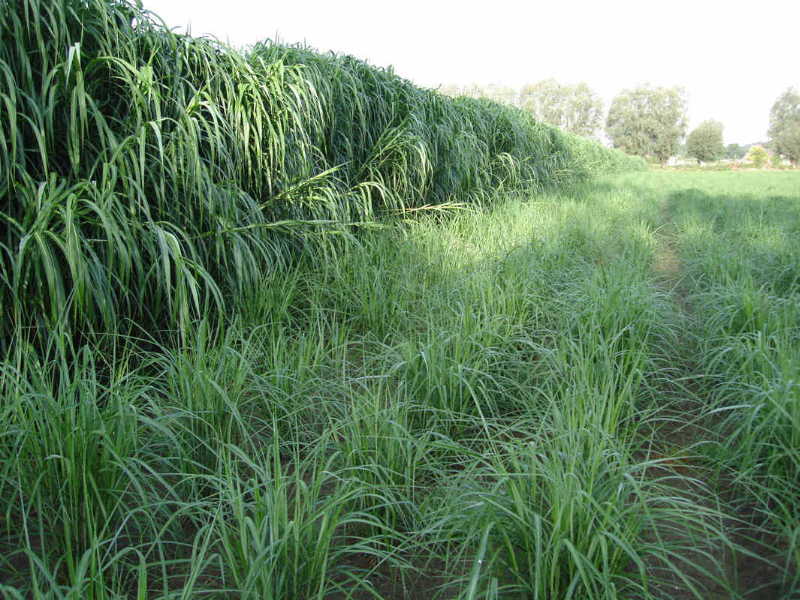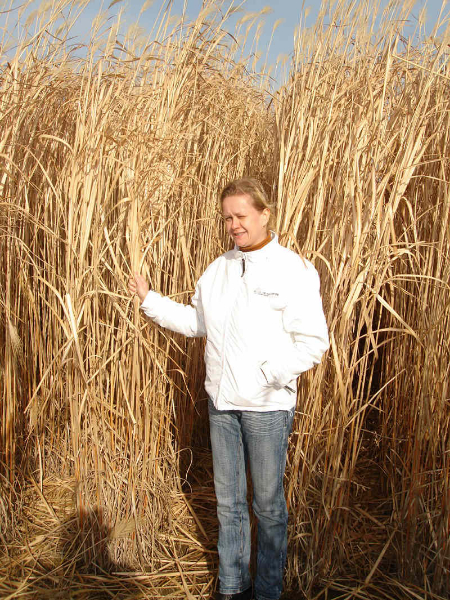Miscanthus

Miscanthus (Miscanthus x giganteus)
is a triploid hybrid formed from a cross of Miscanthus sinensis and Miscanthus sacchariflorus. It is known by active assimilation of carbon dioxide, efficient biomass production, and low microelement content when burned to ashes. Miscanthus provides excellent material for production of fuel briquettes and pellets used by the energy industry and heating systems, as well as high-quality biomass used for production of methane, ethanol, or applied in building constructions and paper industry. Plantations contribute not only to enhanced renewable energy sources but also to atmospheric CO2 reduction, and thus are an environmentally sound alternative.
Miscanthus tolerates
a wide range of soil types and might be planted even on lean soils, on which the plants grow to a height of 3.5 m. Dry matter production from biomass collected after the second vegetation season reaches up 8 t per ha and in subsequent years can be as high as 20 – 40 tons depending on the climatic condition and soil quality.


Miscanthus x giganteus
does not form seeds and thus does not spread beyond its plantation area. It is propagated mainly by in vitro techniques, as well as by rhizome (underground stems) cuttings.
Straw of miscanthus is cut in March and April, when the water content within tissues is relatively low. Stems can be cut with harvesters traditionally used on maize plantations, but numerous machines designed specifically for miscanthus cutting, chopping, pressing and balling are presently available on the market.The energetic value of the dry straw ranges between 17.0 and 19.5 MJ/kg.
